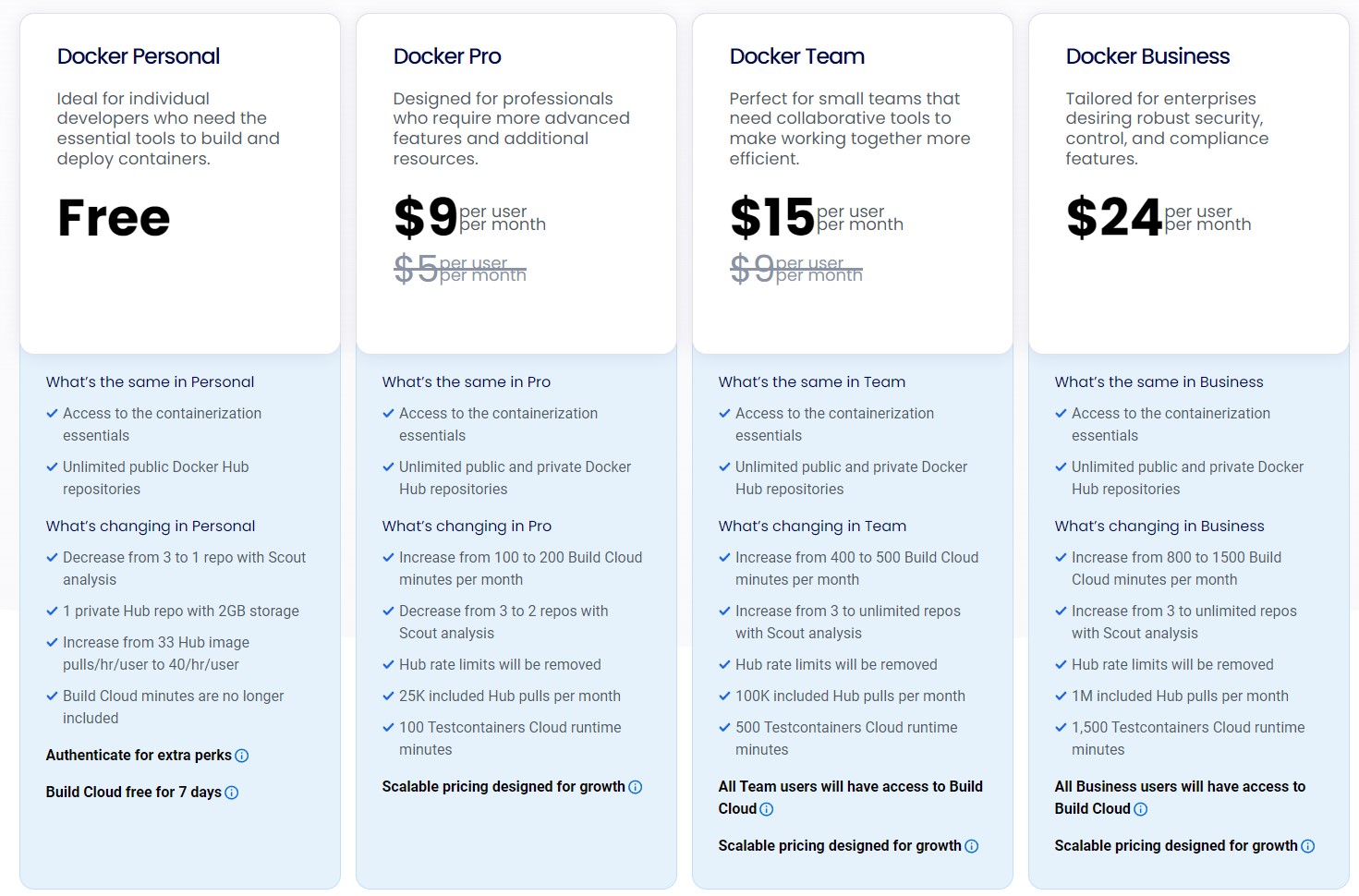Oh. This is /technology. I thought pants were about to go way up in price for a second.
Glad I’m not the only one
How is the transition from docker to podman? I’m using two compose scripts and like 10 containers each. And portainer to comfortably restart stuff on the fly
from what I can gather its currently recommended to use quadlets to generate systemd units to achieve what compose was doing. podman compose is a thing but IIRC I didn’t find that was straight drop in and I had to change the syntax or formatting a bit for it to work and from the brief testing I have put in quadlets seems less hassle, but if you use a non systemd distro then I don’t know.
I’d say about 99% is the same.
Two notable things that were different were:
- Podman config file is different which I needed to edit where containers are stored since I have a dedicated location I want to use
- The preferred method for running Nvidia GPUs in containers is CDI, which imo is much more concise than Docker’s Nvidia GPU device setup.
The second one is also documented on the CUDA Container Toolkit site, and very easy to edit a compose file to use CDI instead.
There’s also some small differences here and there like podman asking for a preferred remote source instead of defaulting to dockerhub.
I can only provide my experience; it was a drop-in replacement. I have 7 services running and 3 db containers. I was able to migrate using the Podman official instructions without issue.
Anyone looking for a free drop in replacement, I’ve been using Rancher Desktop without any issues https://rancherdesktop.io/
So does this setup like a one-node kubernetes cluster on your local machine or something? I didn’t know that was possible.
Basically yes. Rancher Desktop sets up K3s in a VM and gives you a
kubectl,dockerand a few other binaries preconfigured to talk to that VM. K3s is just a lightweight all-in-one Kubernetes distro that’s relatively easy to set up (of course, you still have to learn Kubernetes so it’s not really easy, just skips the cluster setup).Thanks for the info. For others curious, here’s a decent short intro to K3s.
Now I’m kind of wondering if this is light enough for integration tests.
For integration tests I’d go with kind instead. Use it in my work and it works perfectly in our ci/CD. https://kind.sigs.k8s.io/
I use this as well. I haven’t had any issues.
How does the image scanning compare to docker scout? (Or whatever the docket desktop one is called).
I’ve been using podman desktop (https://podman-desktop.io/) which is also free. I’ve never heard of rancher desktop so I’ll have to give that a look!
I second Podman. I’ve been using it recently and find it to be pretty good!
I am getting into Podman but I cannot force my firewall to respect it for some reason.
Rancher is owned by Suse, which is mainly a solid steward in the community.
They also have k8 frontend called Harvestor. It can run VMs directly, which is nice.
Well, there is this one thing: they asked OpenSuse to drop the Suse branding…
Which is fair. Fedora never called itself red hat. CentOS never called itself red hat.
Suse is a pretty good company and deserves the right to their intellectual property and trademarks. OpenSuse shouldn’t make a big deal out of simply changing their name.
They could rename themselves to OpenSusame and keep rolling without any issues whatsoever.
Of course, but I still think it is not very smart from SUSE, since I bet many companies got into SUSE because coworkers had very good experiences with OpenSUSE.
I, at least, if my company would need corporate Linux, would recommend SUSE to my company because of that reason.
I’m sure “professionals” can afford $4
Our 200 developers all switched from docker desktop to rancher after Docker tried to jack up the price about a year and a half ago, along with a bunch of legal threats. Their attitude was so piss poor, we went from debating paying the higher fees to just fucking them off entirely.
I will pay $4 per user to NOT use Docker.
Hmm, I might have to do that at work. We pay for Docker, but we don’t actually use any of the features from Docker, the service. We build our images locally, and production pulls from AWS ECR, yet we all have Docker Hub licenses because my boss felt like we should be paying for it.
Docker works fine, but honestly, we don’t need it, and I have been considering eliminating Docker on my self-hosted stuff.
I love docker images, hate docker Inc.
Their entire offering is such a joke. I’m forced to use Docker Desktop for work, as we’re on Windows. Every time that piece of shit gets updated, it’s more useless garbage. Endless security snake oil features. Their installer even messes with your WSL home directory. They literally fuck with your AWS and Azure credentials to make it more “convenient” for you to use their cloud integrations. When they implemented that, they just deleted my AWS profile from my home directory, because they felt it should instead be a symlink to my Windows home directory. These people are not to be trusted with elevated privileges on your system. They actively abuse the privilege.
The only reason they exist is that they are holding the majority of images hostage on their registry. Their customers are similarly being held hostage, because they started to use Docker on Windows desktops and are now locked in. Nobody gives a shit about any of their benefits. Free technology and hosting was their setup, now they let everyone bleed who got caught. Prices will rise until they find their sweet spot. Thanks for the tech. Now die already.
I actually thought this headline was a joke (i.e. adding 80% of 0 to 0 equals 0), until I clicked the link to see that people actually pay for Docker? I guess this is for Enterprise?
I have never really had much use for it, so never have installed it, but it seems like everyone here uses Docker, which is surprising given the cost and what you just said.
Yeah they witch hunt you pretty bad about using docker in Enterprise
This speaks to my soul so much. I started at a non profit 2 years ago and it pains me how much the company spends on Oracle and docker now and no one does anything about it. So much of our infrastructure is built to rely on these things that we can’t just do without them when they do crazy shit like this. And Oracle and docker can afford to do this as long as a few cash cows hang on like us. Hostage is the worst and best description.
I switched to running docker inside wsl2 (installed as per their docs) and so far it’s been working well.
you didn’t need anything like docker with web 1.0; you just needed cuteftp and a text editor.
Me, still using winscp for random nonsense.
Surely you mean WS_FTP LE.
Enshitification is a very, very real thing. GitLab did something similar with raising pricing by 5x a few years back.
Oh shit, what would I do without… Scout Analysis?
Don’t you mean SWOT analysis?
You SWOT m8?
Recover several hundred GB of disk space, if my team’s experience was any indication.
Hot take: Good for them.
This will have zero impact on 99% of independent developers. Most small companies can move to an alternative or roll their own infrastructure. This will only really impact large corporations. I’m all for corporation-on-corporation violence. Let them fight.
This is a different take on the VMscare broadcom purchase.
The real losers here are SoHos where it is too pricy to migrate and also too pricy not to. I don’t know whether that’s in your 1% or 99% but:
- devs don’t develop for infrastructure their customers don’t use. It’s as dead as LKC, then.
- big customers have deprecated their VMware infra and are only spending on replacement products, and if they do the same for docker the company will suffer in a year.
If docker doesn’t have the gov/mil revenue, are we prepared for the company shedding projects and people as it shrinks?
Remember: when tech elephants fight, it’s we the grass who suffers.
the enshittification begins…
Begins?!? Docker Inc was waist deep in enshittification the moment they started rate limiting docker hub, which was nearly 3 or 4 years ago.
This is just another step towards the deep end. Companies that could easily move away from docker hub, did so years ago. The companies that remain struggle to leave and will continue to pay.
When that happened our DevOps teams migrated all our prod k8’s to podman, with zero issues. Docker who?
Why would anybody use podman for k8s…containerd is the default for years.
Maybe you can run containerd with podman… I haven’t checked. I just run k3s myself.
Yeah, but you don’t need anything besides the runtime with kubernetes. Podman is completely unnecessary since kubelet does the container orchestration based on Kubernetes control plane. Running podman is like running docker, unnecessary attack surface for an API that is not used by anybody (in Kubernetes).
I run k0s at home, FWIW, tried k3s too :)
Yeah I know.
Interesting that you run k0s, hadn’t heard about it. Would you mind giving a quick review and compare it to k3s, pros and cons?
I can’t really make an exhaustive comparison. I think k3s was a little too opinionated for my taste, with lots of rancher logic in it (paths, ingress, etc.). K0s was a little more “bare”, and I had some trouble in the past with k3s with upgrading (encountered some error), while with k0s so far (about 2 years) I never had issues. k0s also has some ansible role that eases operations, I don’t know if now also k3s does. Either way, they are quite similar overall so if one is working for you, rest assured you are not missing out.
Your choice of container runtime has zero impact on the rate-limits of Docker Hub. They probably had a container image proxy already and just switched because Docker is a security nightmare and needlessly heavy.
At work we get around this by not having docker or anything similar set up in the first place.
I’m getting tired of it lol
Folks, the docker runtime is open source, and not even the only one of its kind. They won’t charge for that. If they tried to make it closed source, everyone would just laugh and switch to one of several completely free alternatives. They charge for hosting images, build time on their build servers, and various “premium” developer tools you don’t need. In fact, you need none of this, you can do all of it yourself on whatever hardware you deem to be good enough. There are also many other hosted alternatives out there.
Docker thinks they have a monopoly, for some reason. If you use the technology, you are probably already aware that they don’t.
Does that include running Windows containers? It seems like the alternatives don’t support those.
Does anybody actually use that feature though?
There are always lost sheep in the fields.
Windows container runtime is free as well, simply install the docker runtime from chocolatey or winget along with the Windows Containers and Hyper-V windows features. This is what we do on some build machines for CI.
Theres no reason to use desktop other than “ease of use”
There are some reasons. Networking can get messed up, so Docker Desktop “fixed that” for you, but the dirty secret is it’s basically a Linux VM with Docker CE and some convenience network routes.
Youre talking about Linux containers on Windows, I think commenter above was referring to windows containers on Windows, which is its own special hell for lucky folks like me.
Otherwise I totally agree. Ive done both setups without docker desktop.
If they tried to close source it, someone would just fork it.
Are there any decent alternatives to docker hub for pushing images if I’m just a hobbyist?
Github has a container register you can use.
I thought docker was FOSS? What exactly are they charging you for?
Ability to pull more images from Docker Hub.
Are you sure about that? I dunno if that’s correct.
Yes, in the sense that if you are a free user or unauthenticated and pull too often (including checking if a tag exists) you will get rate limited and have to wait or pay.
Can confirm. Spent a bunch of time a few weeks ago setting up ECR pull through cache in AWS to alleviate this very issue.
Support. If your a business, you pay to keep uptime high. This is unnecessary for most people.
If you’re a business and need uptime you shouldn’t be using Docker Desktop in the first place
You would be amazed
Not amazed, just depressed.
Docker Engine (which is the core of what people think of as “Docker”) is FOSS. Docker Desktop (which most people rely on for local development) is free for individuals but I believe the license says companies over a certain size are required to pay.
And on top of that the paid plans also come with support, which large businesses frequently require, and private repositories on docker’s image repository.
This is the correct response.
At my job we’ve been asked to remove Docker desktop unless it is absolutely necessary for a client project.
I’ve just been using Docker through command line via WSL and that’s good enough for me.
I don’t see any use for Docker Desktop, you can see the running containers in a gui instead of just typing docker ps in a terminal, damn what a fucking awesome and needed thing, it’s gonna totally come in handy when I do deployments through the terminal and I didn’t learn the commands
Especially when your ide/editor has a plug-in that does the sane thing than docker desktop anyways
I’m in the process of learning docker, can you share what that is? That sounds very helpful.
In VSCodium you have the docker plugin. It pretty much offers the same capabilities as the Docker desktop (view containers, images, etc. Allow to connect to the containers, to see their files, etc).
That’s awesome, thanks! I use VSCodium too, will search it up the plugin later. That’ll be super useful.
Glad I run everything in a VM. If you want my money you can accept donations, and sell support contracts.
The moment you hide features or code behind a paywall or proprietary license, is the moment you no longer get my fucking money.
Granted random weirdos who donate to FLOSS projects probably weren’t paying dockers bill anywho.
I am baffled as to why people want a GUI for Docker, of all things
They use Windows
We use it, and I honestly don’t see much value. I use 90% CLI, but occasionally it’s nice. I use macOS at work, so it’s nice to be able to see how much space the VM is using. Also, searching through logs is a little nicer through the GUI than the CLI.
I actively avoid the GUI at home because, even on Linux, it’ll spin up a VM to host your containers, whereas if you stick with the CLI, there’s no VM, which solves soooo many headaches.
I think docker desktop’s bigger value prop is that it’s a well supported zero-effort setup of a VM to run the docker daemon on platforms that don’t support it natively (i.e. MacOS which a lot of programmers use). And it very cleanly handles mounting your local filesystem into containers running in the VM, which is important for dev envs and used to be a source of friction with alternatives (although it seems like the competition has caught up and this also now works out of the box with rancher desktop and others?). Having a GUI is somewhere behind those, though I know folks who have a weird preference for GUIs 🤷♀️.
I’m just a guy who uses Linux and spends most of his time in a terminal, so I’m not saying I value docker desktop, and I personally don’t have to deal with any of this so I’m probably behind on how good the alternatives are. Just saying where I see other people get use out of it.
Podman or Rancher Desktop
Rancher got a lot better very quickly, but I’ve never used podman and have heard mixed things about it… Might give it a whirl at some point, but I’ve been saying that to myself for years

















